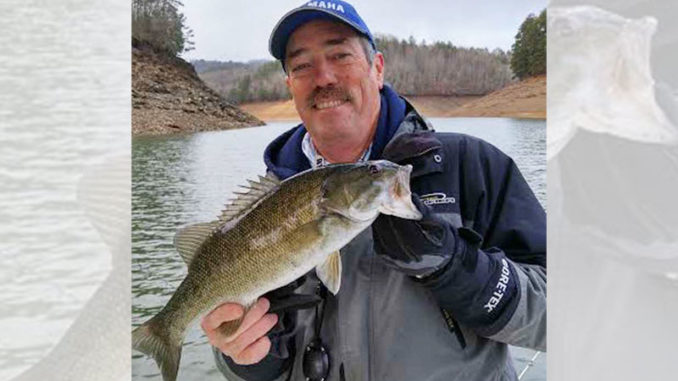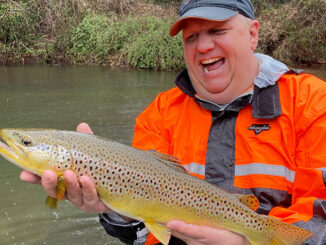
It’s a great time for big smallmouth
Guide James McManus of 153 Charters said that despite the unpredictable February weather, one certainty is that fishermen on North Carolina’s Fontana Lake have a great chance of catching their biggest smallmouth bass ever.
“While the weather can dictate anything from shirt sleeves to snow skis, if there’s a warming trend toward the end of the month, the big girls are cruising the banks, looking for that perfect gravel/rock point to set up housekeeping,” said McManus (153charters@gmail.com), who pointed to fish gorging themselves to put on weight before the spawn.
Despite the heavy rains, McManus said the Tennessee Valley Authority will keep the water level low enough that fishermen can easily spot banks and points that hold fish.
“Look for gently sloping, rounded points with plenty of scattered rock and a mix of gravel and sand,” he said. “Early in the month, they may still be schooled up towards the backs of coves or smaller creeks. Any indention on a rocky bank or dead-end creek flat like Chambers Creek will hold schools.”
Look for the baitfish
McManus said these schools often consist of 10 to 50 fish suspended 20 to 50 feet deep in water 80 feet deep. To find them, he looks for wispy clouds of baitfish on his sonar rather than solid masses of bait.
“Solid bait masses mean they aren’t being chased or hassled,” said McManus. He said marked fish may not bite at first, even if a fisherman drops a lure in front of them.
“Just hang with it for several minutes,” said McManus. “They are like cats. Sometimes you have to aggravate them into eating. Being patient, especially on bluebird days, puts fish in the boat.”
For shallow fishing or for fish driving bait to the surface, McManus uses Shad Raps, jerkbaits, small spoons and jigs. Smallmouth may also move as deep as 80 feet. For these fish, McManus uses an ice jig or heavy spoon. The key is marking the fish on your electronics before dropping down a bait.
If you aren’t getting bites but are marking fish, always go smaller,” he said. “Shad that hatched late may still be just an inch long, and that’s what you have to match.”
McManus favors the lower end of the lake because it has more schools of quality smallmouth than schools of spotted bass.
Because of the growing number of spotted bass in Fontana, McManus releases all of the smallmouths he catches to help them maintain their numbers. He would like to see other fishermen follow that practice.
McManus also cautions fishermen to be aware of weather changes and to dress in layers.



